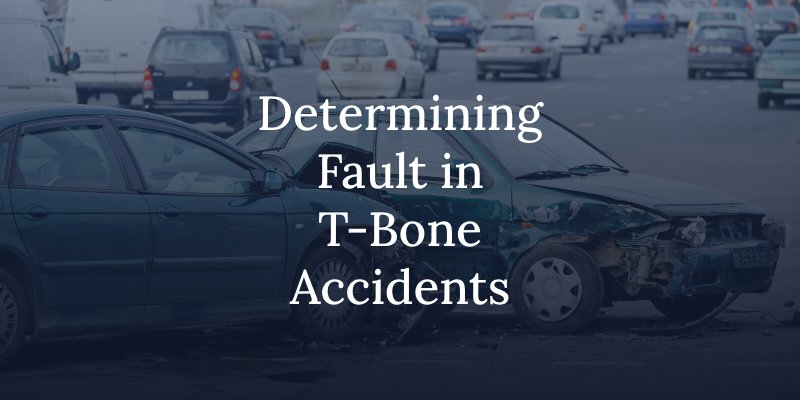Who Is at Fault in a T-Bone Accident?
A T-bone accident, also known as a side-impact collision, occurs when the front of one vehicle crashes into the side of another, forming a “T” shape at the point of impact. These accidents often happen at intersections, parking lots, or on multi-lane roads. The question of who is at fault in a T-bone accident can be complex, depending on the circumstances leading up to the collision. If you’ve been involved in a T-bone accident, our Seattle T-bone accident attorneys at Brumley Law Firm can help you understand your legal options.
Common Causes of T-Bone Accidents
Common causes of these collisions include:
- Running a Red Light or Stop Sign: One of the most frequent causes of T-bone accidents is a driver failing to stop at a red light or stop sign. When a vehicle proceeds into an intersection unlawfully, it risks colliding with a vehicle that has the right of way.
- Failure to Yield: T-bone accidents can occur when a driver fails to yield at intersections or during left-hand turns. This may happen at intersections where a yield sign is present or when a driver misjudges the speed of an oncoming vehicle.
- Distracted Driving: Being distracted while driving, such as texting, eating, or adjusting the radio can lead to a driver running a traffic signal or failing to notice an oncoming vehicle, resulting in a T-bone collision.
- Speeding: Speeding drivers may have difficulty stopping in time at intersections or reacting to other vehicles, increasing the likelihood of a T-bone collision.
- Driving Under the Influence (DUI): Alcohol or drug impairment significantly affects a driver’s judgment and reaction time, often leading to accidents, including T-bone collisions.
- Improper Turns: Making a turn from the wrong lane or turning without signaling can lead to confusion and collisions at intersections.
- Adverse Weather Conditions: Rain, snow, or ice can cause vehicles to slide into intersections or lose control, increasing the likelihood of side-impact crashes.

Determining Fault in a T-Bone Accident
Determining fault in a T-bone accident requires a thorough investigation of the circumstances. Here are key factors that help establish liability:
1. Traffic Laws and Right of Way
Understanding which driver had the right of way at the time of the accident is crucial. For example, if one driver ran a red light or ignored a stop sign, they would likely be found at fault for the collision. Traffic camera footage or witness statements can provide evidence in such cases.
2. Police Reports
After a T-bone accident, law enforcement typically arrives at the scene to assess the situation. Officers will document their observations, interview drivers and witnesses, and possibly issue citations. The police report can be a valuable piece of evidence when determining fault.
3. Witness Statements
Eyewitnesses can provide objective accounts of what occurred before and during the accident. Their statements may corroborate one driver’s account or shed light on details that are unclear.
4. Vehicle Damage
The location and extent of damage on the vehicles involved can help accident reconstruction experts determine the point of impact and how the collision occurred. For instance, significant damage to the side of one vehicle indicates it was hit by the front of the other vehicle.
5. Surveillance or Dashcam Footage
Footage from traffic cameras, nearby businesses, or dashcams can provide indisputable evidence of the events leading up to the collision. This can be particularly helpful in showing whether a driver ran a red light or failed to yield.
6. Accident Reconstruction
In complex cases, accident reconstruction experts may analyze the scene, vehicle damage, and skid marks to recreate the collision. Their findings can clarify who was at fault.
Shared Fault and Comparative Negligence
In some T-bone accidents, both drivers may share fault. For example, one driver may have run a red light while the other was speeding. In such cases, Washington State’s comparative negligence laws come into play. Under this system, fault is assigned as a percentage to each party involved. If you are found partially at fault, your compensation for damages may be reduced by your percentage of fault.
For instance, if you were 30% at fault for the accident and incurred $10,000 in damages, you would be eligible to recover $7,000 (70% of your total damages). It is crucial to consult with a Seattle injury attorney to understand how comparative negligence may affect your case.
Why Legal Representation Matters
T-bone accidents often result in severe injuries, costly medical bills, and significant property damage. Determining fault can be challenging, especially if multiple parties are involved or if comparative negligence applies. An attorney can help you gather evidence, assess liability, and help you pursue the compensation you may be entitled to under Washington law.
Get Legal Help Today
Determining fault in a T-bone accident requires careful consideration of traffic laws, witness statements, and evidence from the scene. Whether you are dealing with an at-fault driver or navigating comparative negligence, having a legal advocate can help you better understand your rights and options. If you have been involved in a T-bone accident, call our Seattle accident attorneys at (833) 832-2727 or complete our online form to schedule a free consultation. We’re here to help you explore your legal options.